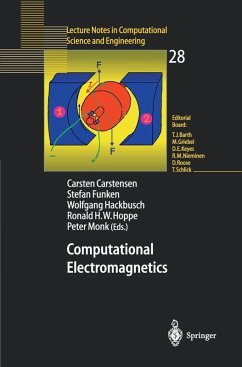The dimmed outlines of phenomenal things all into one another unless we put on the merge focusing-glass of theory, and screw it up some times to one pitch of definition and sometimes to another, so as to see down into different depths through the great millstone of the world James Clerk Maxwell (1831 - 1879) For a long time after the foundation of the modern theory of electromag netism by James Clerk Maxwell in the 19th century, the mathematical ap proach to electromagnetic field problems was for a long time dominated by the analytical investigation of Maxwell's equations. The rapid development of computing facilities during the last century has then necessitated appropriate numerical methods and algorithmic tools for the simulation of electromagnetic phenomena. During the last few decades, a new research area "Computational Electromagnetics" has emerged com prising the mathematical analysis, design, implementation, and application of numerical schemes to simulate all kinds of relevant electromagnetic pro cesses. This area is still rapidly evolving with a wide spectrum of challenging issues featuring, among others, such problems as the proper choice of spatial discretizations (finite differences, finite elements, finite volumes, boundary elements), fast solvers for the discretized equations (multilevel techniques, domain decomposition methods, multipole, panel clustering), and multiscale aspects in microelectronics and micromagnetics.
Dieser Download kann aus rechtlichen Gründen nur mit Rechnungsadresse in A, B, BG, CY, CZ, D, DK, EW, E, FIN, F, GR, HR, H, IRL, I, LT, L, LR, M, NL, PL, P, R, S, SLO, SK ausgeliefert werden.









